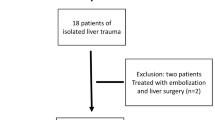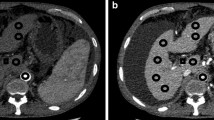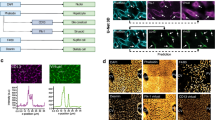Abstract
ABSTRACT: The umbilical vein provides the majority of hepatic blood flow during fetal life. After birth, liver blood flow is derived from the hepatic artery and portal vein, but ductus venosus patency can alter portal venous blood flow to the liver. To characterize changes in hepatic blood flow and oxygen metabolism in the immediate perinatal period, we studied liver and ductus venosus blood flow in seven fetal sheep before and after birth using the radionuclidelabeled microsphere method. Hepatic blood flow fell from 423 ± 117 (mean ± SD) mL/min/100 g liver in the fetus to 144 ± 73 by 2 h after delivery. Although portal venous blood flow increased progressively from 2 to 10 h (137 ± 48 to 305 ± 140 mL/min/100 g), because of increasing ductus venosus shunt flow, total hepatic blood flow did not change. Hepatic arterial flow was 46 ± 24 mL/min/100 g at 2 h, providing 35% of total hepatic blood flow, and did not change over the next 8 h. Hepatic oxygen delivery fell after birth from 58 ± 25 mL/min/100 g liver in the fetus to 21 ± 11 at 2 h and then remained constant. Hepatic oxygen consumption was 7.3 ± 2.6 mL/min/100 g liver in the fetus and ranged from 3.2 ± 1.5 to 4.1± 1.8 mL/min/ 100 g liver during the 10 h after birth. Loss of the umbilical- placental circulation at birth substantially reduces hepatic blood flow. Hepatic arterial flow does not increase to compensate for decreases in total hepatic blood flow. The persistent ductus venosus shunt compromises portal venous supply to the liver. Hepatic oxygen extraction increases after birth, but is not adequate to maintain hepatic oxygen consumption at prenatal levels.
Similar content being viewed by others
Log in or create a free account to read this content
Gain free access to this article, as well as selected content from this journal and more on nature.com
or
Author information
Authors and Affiliations
Rights and permissions
About this article
Cite this article
Townsend, S., Rudolph, C. & Rudolph, A. Changes in Ovine Hepatic Circulation and Oxygen Consumption at Birth. Pediatr Res 25, 300–304 (1989). https://doi.org/10.1203/00006450-198903000-00019
Received:
Accepted:
Issue date:
DOI: https://doi.org/10.1203/00006450-198903000-00019
This article is cited by
-
Increased risk of bradycardia in vigorous infants receiving early as compared to delayed cord clamping at birth
Journal of Perinatology (2023)
-
Immunohistochemical approach reveals involvement of inducible nitric oxide synthase in rat late development
Journal of Molecular Histology (2009)



